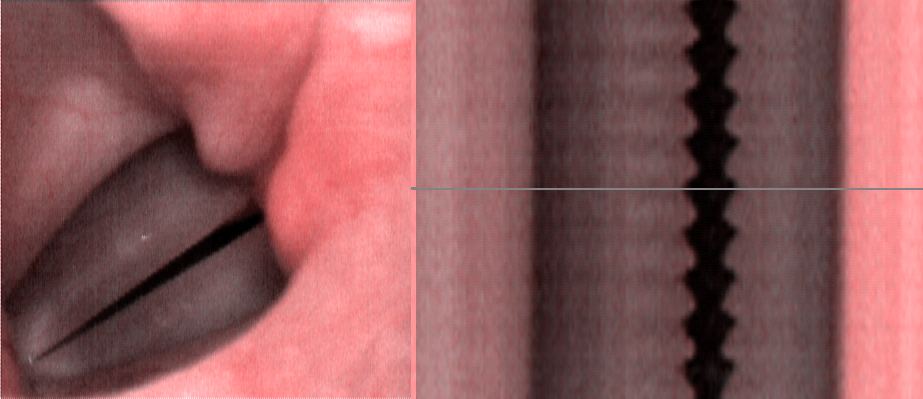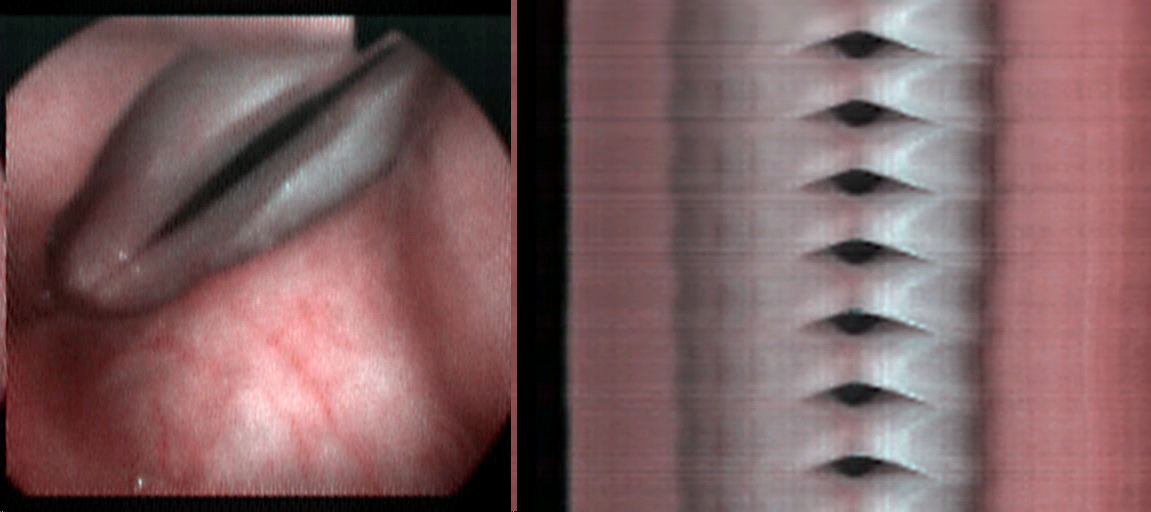Use of the ALIS set with a high-speed camera with optics less than 10 mm in diameter and flexible optics
Author: MSc Anna Racino, Ph.D. Marcin Just (DiagNova Technologies)Date: 2021.09.13
In the case of a high-speed camera, it is critical to provide the right amount of light. This is usually associated with the requirement to use good quality, "bright" optics with a large diameter.
It is very important that the ALIS endoscopic set has a classic adapter that allows you to connect most endoscopic optics available on the market. In HD mode, you can use any optics, including otoscopes with diameters even smaller than 5 mm. In high-speed (or strobe) mode, the amount of available light is smaller and the choice of optics must be more careful. In the case of adults, especially men with a long larynx, the distance from the end of the optics to the vocal folds can be considerable and it is recommended to use optics with a diameter of 10 mm or elliptical (8x12 mm). This is especially important when using 90 ° optics. For children, the distance between the vocal folds and the end of the optics are much smaller, which allows to use optics with a much smaller diameter without significant loss of image quality. All pediatric optics dedicated to stroboscopy can be used, e.g. Xion optics with a diameter of 7 mm, as well as better-quality universal optics with diameters even from 6 mm. To be sure, tests were performed in theoretically more demanding conditions in terms of the distance from the vocal folds - i.e. adult folds. Endoscopic optics 5,8 mm, 70°, KARL STORZ model 8700 CKA, was used for the test. The frame and kymography from this examination are shown below (Fig. 24).

Fig. 24a. The result of examining an adult woman using high-speed camera with 5.8 mm optics - recording speed 2400 fps.

Fig. 24b. The result of examining an adult woman using high-speed camera with 5.8 mm optics - recording speed 3200 fps.
It is also possible to connect fiberoscopes to the high-speed camera. The tests were carried out for the Fiegert Endotech 800.3800 model (diameter 3.4 mm), obtaining very useful results (Fig. 25). The test was also carried out for Xion 3,2 mm optics and also obtaining useful results but with slightly less image brightness. It is also possible to use a fiberoscope with diameter 2,7 mm but then a significant degradation of image quality in high-speed mode should be taken into account. In the recording mode without using the high-speed camera, the 2.7 mm fiberoscope should give satisfactory results, but it is strongly recommended to use a separate device with flexible optics with the "chip on tip" technology for examining organic changes. It will provide better quality than fiberscope. Unfortunately, such devices do not exist and will not be available in the high-speed version in the near future.
In a situation where performing the examination with rigid optics is impossible for various reasons, using a fiberscope in the mouth insertion with an additional guide tube may be considered. Then the diameter of the fiberscope is of less importance and the examination is relatively less stressful for the patient.

Fig. 25. Examination result - high-speed camera with 3.4 mm fiberoscopic optics - recording speed 2400 fps. The publishing rights to the video material from fiberoscopic recordings are held by the University Clinical Hospital No. Norbert Barlicki in Łódź
The cost of the rigid optics (5.8mm), which was used in the tests presented above, is approx. PLN 8,000 net. The cost of specialist pediatric optics is comparable to the cost of 10mm optics.
Currently, we offer a version of the illuminator better suited to optics with a smaller diameter and fiberscopes - it provides approx. 70% higher brightness. The demo kit used to record the samples presented did not include this new version of the illuminator.